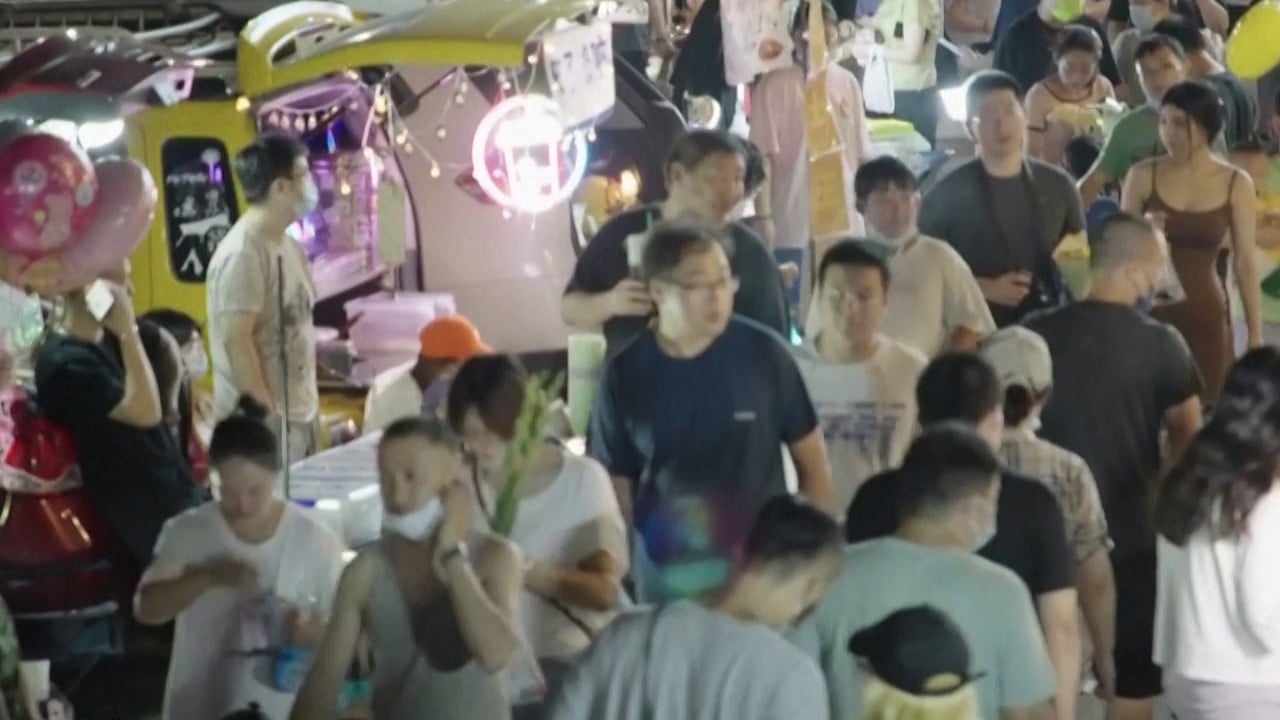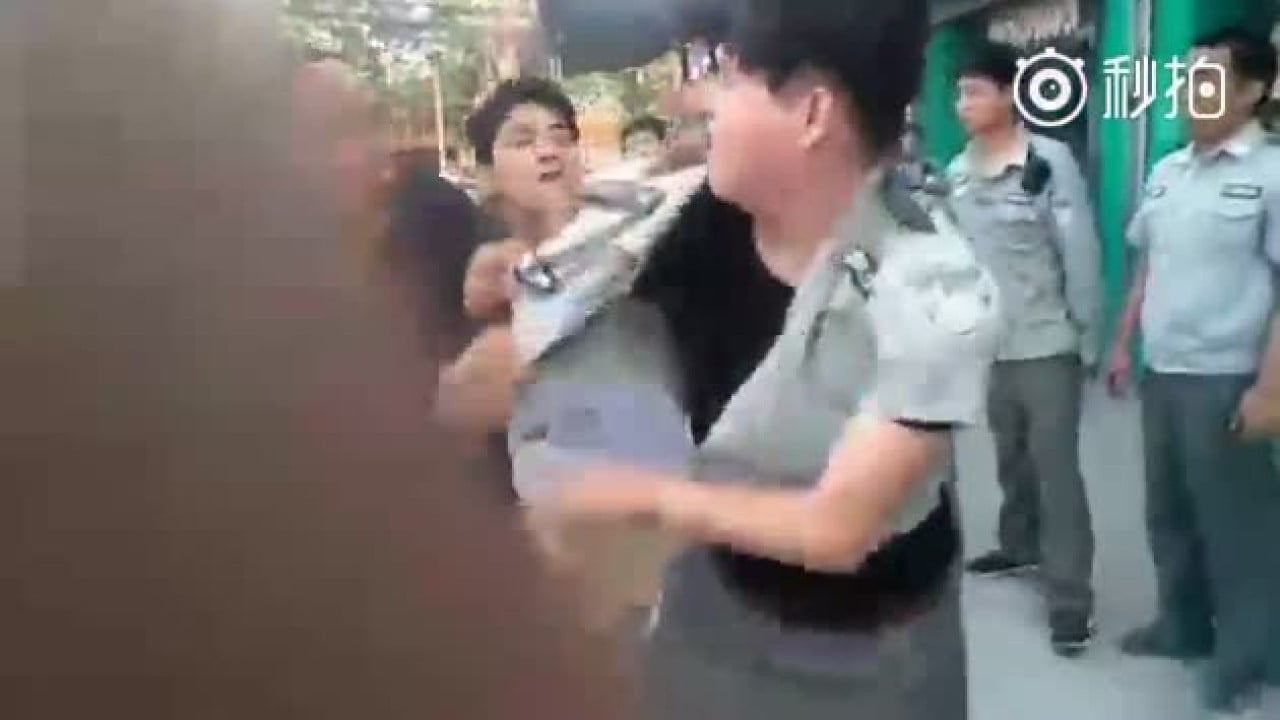
China’s street stall economy handed lifeline as curbs lifted in boost for jobs, scared hawkers
- For years, municipal officials pushed out hawkers in an effort to clean up the street stalls that once characterised many of China’s cities
- Shenzhen, though, will allow street vendors to operate from the start of September in designated areas within the city
During lunchtime in China’s tech hub of Shenzhen, workers regularly line up to buy steamed dumplings and frozen desserts from carts, but at any time, the hawkers could abruptly take off to avoid getting caught by local enforcement officials.
“I am very scared of getting caught,” said a vendor who only gave their surname as Yao, who typically operates in Baoan, a district famous for its electronics factories.
Yao can face a fine of thousands of yuan and have her cart confiscated if she is caught by city management officers, known as chengguan, selling bingfen, an ice jelly that is a popular Chinese dessert.
For years, municipal officials pushed out hawkers in an effort to clean up the street stalls that once characterised many of China’s cities, but whether individuals like Yao should be allowed to operate remains a matter of debate within policymakers.
‘I don’t want to go back to work in an office’: street vending returns in China
Beijing has insisted that hawkers should not be allowed to operate in the capital and that the streets must be kept tidy and orderly.
In an article published by Beijing Daily in February, the city government made it clear that all advertisements, businesses with a license to sell goods near their premises and displays by stores on the streets must be regulated, adding that stalls ultimately affect “the appearance of the city”.
On Tuesday, the Shenzhen Special Zone Daily, a newspaper owned by the city government, announced that street vendors will be allowed to operate from the start of September in designated areas within the city.
Yao, a migrant worker who moved to the southern city from the central Hunan province last year, will soon be able to freely work in central areas where there are more customers without the fear of being fined or having her cart taken away.
Being able to sell on the streets is also crucial to the income of 51-year-old diner owner Luo, who struggles to make enough selling breakfasts to cover her 13,000 yuan (US$1,881) monthly rent.
To supplement her income, Luo sells stir fried noodles outside the bars in the nearby Qianhai district.
In the city centre, especially in bar areas where young people gather, there are a lot of advantages in setting up stalls. When they are drunk, they like to spend
Luo can make up to 10,000 yuan a month selling street food to hungry bar-goers, mostly young people and construction workers.
“In the city centre, especially in bar areas where young people gather, there are a lot of advantages in setting up stalls. When they are drunk, they like to spend,” Luo said.
Luo, though, is cautious over the news that hawkers will soon be allowed to legally return to the streets.
Enforcing the ban on street stalls has seen clashes between local enforcement officers and hawkers across China, and in some cases, the disputes led to deaths and serious injuries.
But Luo said she can earn more by focusing on selling street food in the central business district and is already considering moving her diner to a cheaper location.
The Shenzhen Special Zone Daily reported that some members of the Standing Committee of the Municipal People’s Congress supported the lifting of the ban, because it would not only help to “restore the economy and promote consumption growth, it also responds to the needs of people’s livelihood, a reflection of inclusiveness in the city”.
The newspaper also acknowledged that the “wisdom” of relevant departments would be tested by their handling of the street stalls and other displays on the streets.
Local governments are under huge pressure to boost consumption and this is a relatively easy policy for them to implement
Rory Green, head of China and Asia research at London-based research firm TS Lombard, said the U-turn reflects a greater priority being placed on economic growth and consumption over the concerns of local residents and businesses.
“Local governments are under huge pressure to boost consumption and this is a relatively easy policy for them to implement,” Green said.
“Employment pressure is still large. These businesses are low capital intensity, easy to set up and quick to create jobs and absorb unemployed migrant workers.”
In China, it’s lying flat. The US, gap years. Either way, things are changing
Officially it is hard to gauge the actual size of China’s street stall economy because not all hawkers are required to register as a business.
According to data from the State Administration for Market Regulation, there were 170 million market entities in China as of the end of January.
Around 114 million are individual businesses, accounting for around two-thirds of the total market entities and employing nearly 300 million people.
“Simply put, money spent at a street vendor will not be spent elsewhere in the economy,” Green added.




